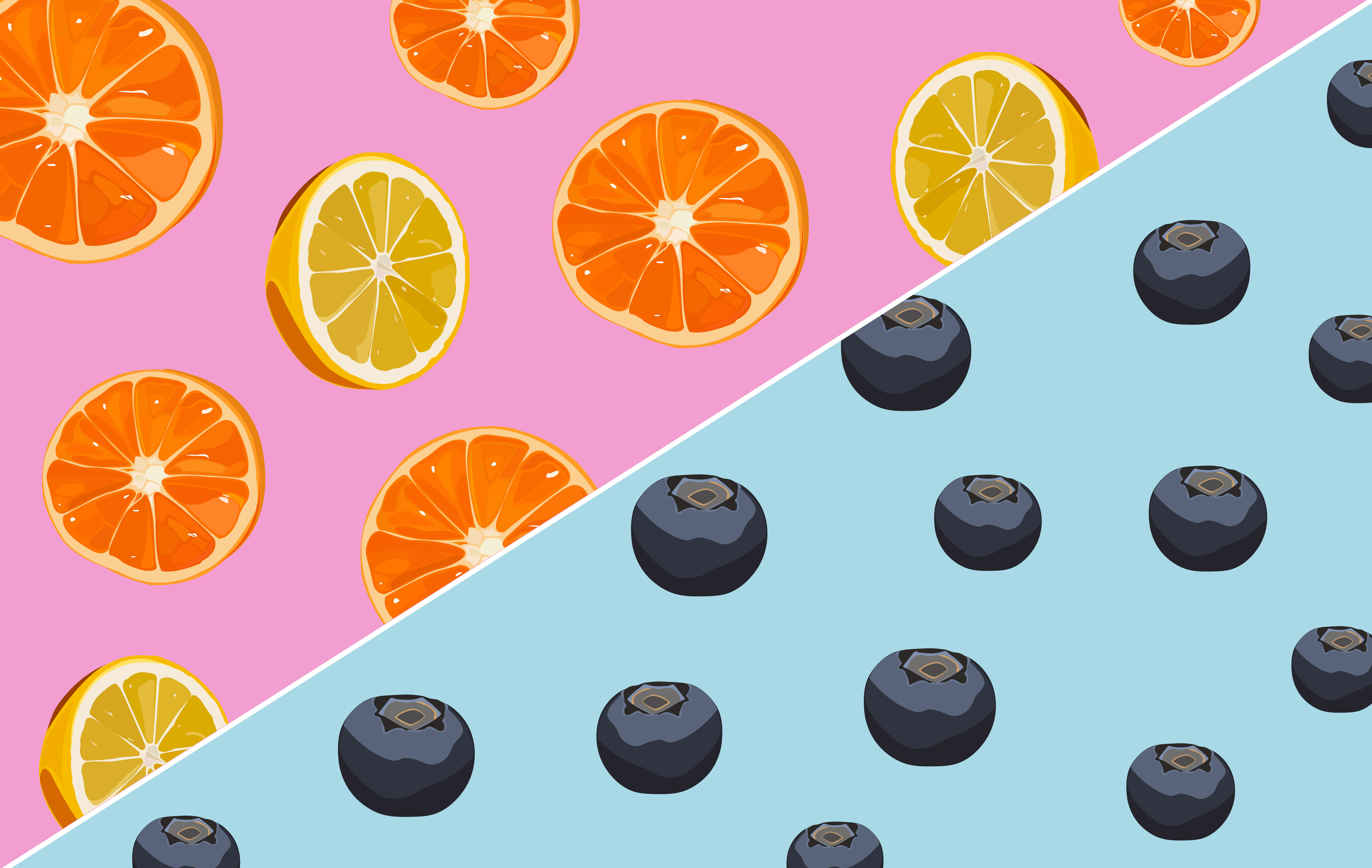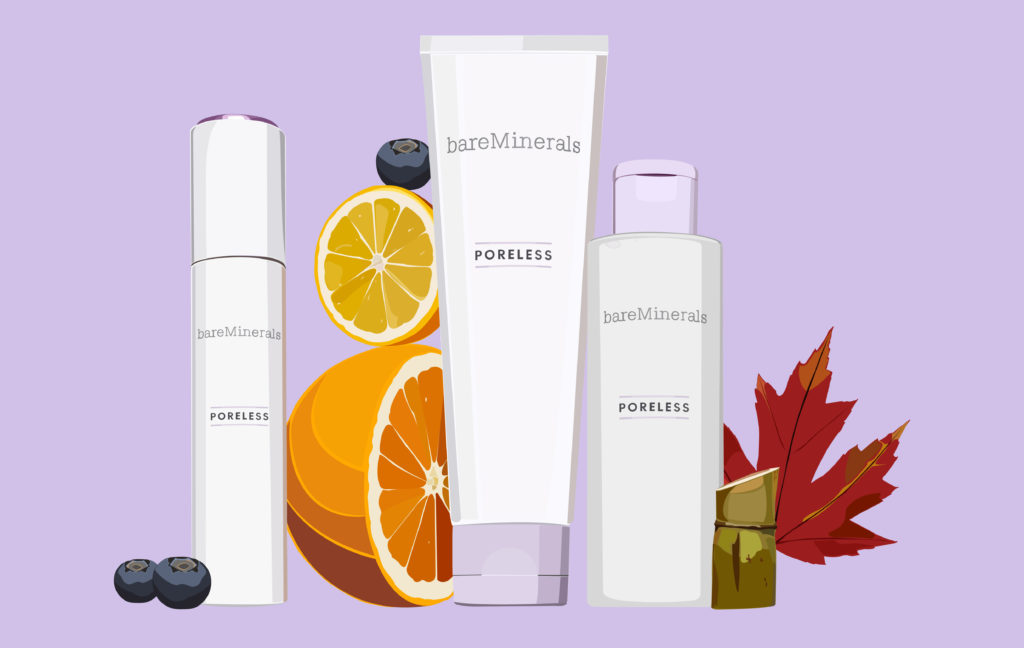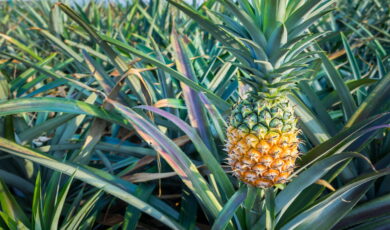Ingredient Spotlight: Fruit Acids

If you’ve ever wondered why so many dermatologists and skin care experts swear by fruit acids, you’ve landed in the right spot. Today we’re doing a deep dive on this potent group of skincare ingredients and we predict very glowy, happy skin in your future.
What are Fruit Acids?
Though the word “acid” may seem scary — especially when your delicate skin is involved — there’s no need for alarm. In science class you probably learned all about the pH scale, which ranges from zero (acidic) to 14 (basic). The middle ground is seven and our skin falls right around 5.5, making it slightly acidic in its normal state.
Fruit acids found in skin care products are part of the alpha hydroxy acid (AHA) group. Like our skin, they also fall on the acidic end of the scale, typically ranging from three to four, and are very mild in over-the-counter products. In other words, don’t let the word “acid” make you run from this game-changing group of ingredients.

What Are the Different Types of Fruit Acids, and What Do They Do?
Fruit acids are considered skincare superheroes because of how effectively they combat signs of aging; they help exfoliate, brighten, and improve tone and texture. Some of the most common types are Glycolic, Lactic, Mandelic, Malic, Tartaric and Citric Acid. Though the various fruit acids work similarly, each does have a unique set of benefits. (Also, note that even though they’re called “fruit aids” some actually aren’t derived directly from fruit.)
- Glycolic Acid: Derived from sugar cane and considered a “holy grail” AHA fruit acid by many skincare experts and enthusiasts, it’s great for exfoliating dead skin cells to reveal brighter skin and for evening out your complexion.
- Lactic Acid: Usually derived from milk, but also extractable from certain fruits, it helps fade dark spots and stimulates collagen production to soften fine lines and help improve skin texture in addition to gently exfoliating and brightening. It’s also hydrating.
- Citric Acid: Commonly found in citric fruits, including oranges and lemons, its hallmark benefits include antioxidant properties and its ability to brighten skin and fade dark spots. It’s also astringent, which means it can help reduce visible pore size and keep oil at bay.
- Malic: Derived from apples, it helps brighten, tone, and boost collagen production to help improve skin’s elasticity.
- Mandelic: Derived from bitter almonds, it’s helpful in combatting oil production and acne. Like other acids, it also exfoliates, brightens and improves texture.
We’re big believers in fruit acids, which is why you’ll find Orange, Lemon, Bilberry, Sugar Cane and Sugar Maple in our new PORELESS Skincare Collection. These botanical extracts deliver five natural AHAs to the skin — Lactic (from Bilberry), Glycolic (from Sugar Cane), Citric (from Orange and Lemon) and Malic and Tartaric (from Sugar Maple) — for dramatically smaller pores.
What Are Peels vs. Micropeels?
When you hear the word “peel” in reference to a skincare treatment, it’s simply referring to skin exfoliation or a “peeling away” of skin. Peels come in varying concentrations, with the deepest ones penetrating the middle layer of your skin (dermis), while others mildly exfoliate the surface of your top layer of skin (epidermis).
The latter is considered a “micropeel” in the sense that it’s only affecting the superficial, outermost layer of your epidermis. It’s mild, gentle, and great for a daily (or even twice daily!) application. Our PORELESS Exfoliating Essence acts just like a micropeel, and it’s meant to be used AM and PM.
On the other hand, deep peels (such as a trichloroacetic acid or phenol peel) are applied in a controlled office setting and, though very effective, often involve several days to several weeks of post-treatment peeling. There’s a middle ground of peels, which can be found over the counter or applied in-office. They’re best used as a bi-weekly, weekly or monthly pick-me-up.

How Often Should You Use Fruit Acids on Your Skin?
How often you apply fruit acids depends on how the product is formulated. For instance, if you’re using a more concentrated product — say, a mild at-home peel — then usually once or twice a week is ideal. Other products, including those in our PORELESS collection, are formulated for everyday use to help maintain a bright, even, smooth complexion. When in doubt, refer to the product’s instructions or speak with your dermatologist or esthetician.
Is It OK to Switch Between Fruit Acids?
Yes, it is OK to switch between fruit acids. In fact, many products combine several different types of fruit acids (our PORELESS collection products do this) to help target multiple skin issues.
Are Fruit Acids Considered Harsh for Skin?
Yes, the term “acid” can be pretty daunting. But fruit acids/AHAs are quite mild in their over-the-counter applications and many skin types benefit from consistent usage. The only exception would be if you have highly sensitive skin, but this still doesn’t mean you must exclude them from your regimen. In some cases, they can even help. (It’s best to ask your dermatologist about incorporating fruit acids into your skin care regimen if you have sensitive skin, ongoing skin ailments, or any other skin concerns.)

Do You Need SPF After?
The truth is that you should be wearing SPF every single day, no matter what your regimen is. However, fruit acids can make your skin more photosensitive — AKA more reactive to the sun — so it becomes even more important to slather. Dermatologists recommend a broad-spectrum SPF of 30 or greater applied every 2-4 hours.
The bottom line: The inclusion of fruit acids in your skincare regimen can be the difference between dull and glowing skin, rough and smooth texture, and enlarged or barely-there pores. They can improve your skin barrier function, keep skin hydrated and healthy, and help you achieve a more youthful-looking, vibrant complexion in both the short and long term.
Illustrations by Kayla Moffatt





